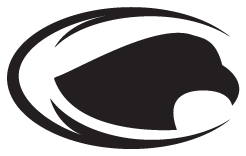
401(k) plans are a critical tool for many Americans striving to secure their retirement.
These tax-advantaged accounts often represent a significant portion of an investor’s financial future.
However, common misconceptions about 401(k) plans may hinder participants from optimizing their retirement savings.
Sometimes, the beliefs we hold as facts can lead us astray.
This applies to 401(k) plans, these misconceptions could potentially affect how you manage your retirement savings. And how much you have saved.
Keep reading for 5 common 401(k) myths.
Myth #1: Your Employer Covers All the Costs

Many employees believe that because their 401(k) plan is employer-sponsored, all associated costs are borne by the employer.
While some employers cover administrative fees, others may not.
Additionally, the investments in your 401(k) often come with their own fees, such as expense ratios for mutual funds and other investment options.
The U.S. Department of Labor requires 401(k) providers to disclose all fees to participants.
This information is typically included in your plan’s fee disclosure documents and is updated annually.
Reviewing these documents may provide insights into how much of your returns may be reduced by fees.
For a clearer picture of your 401(k) costs, request the fee disclosure section (408(b)(2)) from your plan provider or Human Resources department.
If you don’t know how to read this disclosure, get a professional to help you.
Alternatively, you can examine your most recent 401(k) statement for a breakdown of fees.
High fees may significantly impact the long-term growth of your retirement savings.
For example, a 1% fee might not seem like much, but over decades, it could mean tens of thousands of dollars less in your account.
Myth #2: A Set-It-and-Forget-It Approach Works Best

Some participants assume that once their 401(k) is set up, they can leave it alone and watch it grow.
However, a successful retirement savings strategy often requires ongoing attention.
Over time, factors such as market fluctuations, changes in risk tolerance, and evolving tax policies may impact your 401(k).
Regularly reviewing your account and rebalancing your investments may help ensure your portfolio remains aligned with your retirement goals.
If you’re unsure how to manage or rebalance your 401(k), seeking independent, professional advice may help you navigate the complexities of retirement planning.
See how 401(k) Maneuver helps employees grow and protect their 401(k) accounts.
Myth #3 Reading Your Statements Doesn’t Matter

Your 401(k) account balance plays a key role in determining the retirement income you receive.
That’s why it’s essential to review your statements every time you receive one.
These statements provide a clear picture of your 401(k)’s performance and help identify areas where adjustments may be needed to rebalance your portfolio.
They also break down the fees you’re paying, which directly impacts the amount of income you’ll have in retirement.
While 401(k) statements may vary based on your employer and plan, most contain similar key information.
Check out this video below to learn how to read and understand your 401(k) statements.
Myth #4: Target Date Funds Are the Best Option for Every Investor

Target date funds are often promoted as a simple, hands-off investment choice for retirement savings.
These funds adjust their asset allocation over time, becoming more conservative as you approach your target retirement year.
While this may suit some investors, it’s important to recognize that target date funds are not a one-size-fits-all solution.
Target date funds provide a convenient option for many investors but may not align with everyone’s unique financial situation.
Additionally, these funds may carry higher fees compared to other investment options.
Choosing individual investments based on your personal risk tolerance and retirement timeline may better align with your financial strategy.
For example, an investor with a higher risk tolerance nearing retirement may find that a target date fund’s conservative allocation does not align with their growth-oriented strategy.
Conversely, someone with a lower risk tolerance might feel target date funds remain too aggressive.
Regularly reviewing and rebalancing your portfolio may also help ensure your investments remain aligned with your goals.
Myth #5: Age Matters When It Comes to Contributing to Your 401(k)

Another 401(k) myth is thinking you’re too old or too young to start contributing.
The cost of retirement continues to rise.
Healthcare, transportation, housing – it’s only going up from here.
And every bit you save now will help in the future.
If you’re close to retirement, what you contribute today may make a significant impact on your retirement income.
Contributing the max (or close to it now) may also help come tax time with a lower tax bill because contributions are not counted as income. Consult a tax advisor to understand how contributing to your 401(k) could affect your tax situation.
For those who are younger, it’s never too early to start investing because you have time on your side.
Contributing what you can now helps the power of compounding to take effect. And you’re able to grow your savings tax deferred.
Protect Your Retirement

401(k) Maneuver provides professional account management to help you grow and protect your 401(k) account.
Our goal is to increase your account performance over time, manage downside risk to minimize losses, and reduce fees that may harm your account performance.
Our done-for-you virtual service lets you keep your 401(k) right where it is while we review and rebalance your account based on your risk tolerance and current market conditions.
Have questions or concerns about your 401(k) performance? Book a complimentary 15-minute 401(k) strategy session with one of our advisors.
.fb-background-color {
background: !important;
}
.fb_iframe_widget_fluid_desktop iframe {
width: 1100px !important;
}















